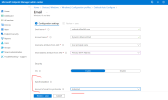thecomputerguy
Well-Known Member
- Reaction score
- 1,453
Thankfully I migrated all my clients off Rackspaces platform years ago but I do have a colleague who has about 700 accounts at Rackspace some being hosted exchange and some people pop/IMAP.
I told him to stop the pop/IMAP crap and move fully to M365 either direct or through Pax8.
This outage sounds like it could be devastating for Rackspace and they may not recover from this. Their platform sucks and apparently their customer support is not even close to what it used to be as they were bought out in 2016.
The people are r/sysadmin are telling everyone to grab all the OST's ASAP.
On to my question, is there a way to grab the individual OST's on user stations and use that as a way of recovering?
I told him to stop the pop/IMAP crap and move fully to M365 either direct or through Pax8.
This outage sounds like it could be devastating for Rackspace and they may not recover from this. Their platform sucks and apparently their customer support is not even close to what it used to be as they were bought out in 2016.
The people are r/sysadmin are telling everyone to grab all the OST's ASAP.
On to my question, is there a way to grab the individual OST's on user stations and use that as a way of recovering?


